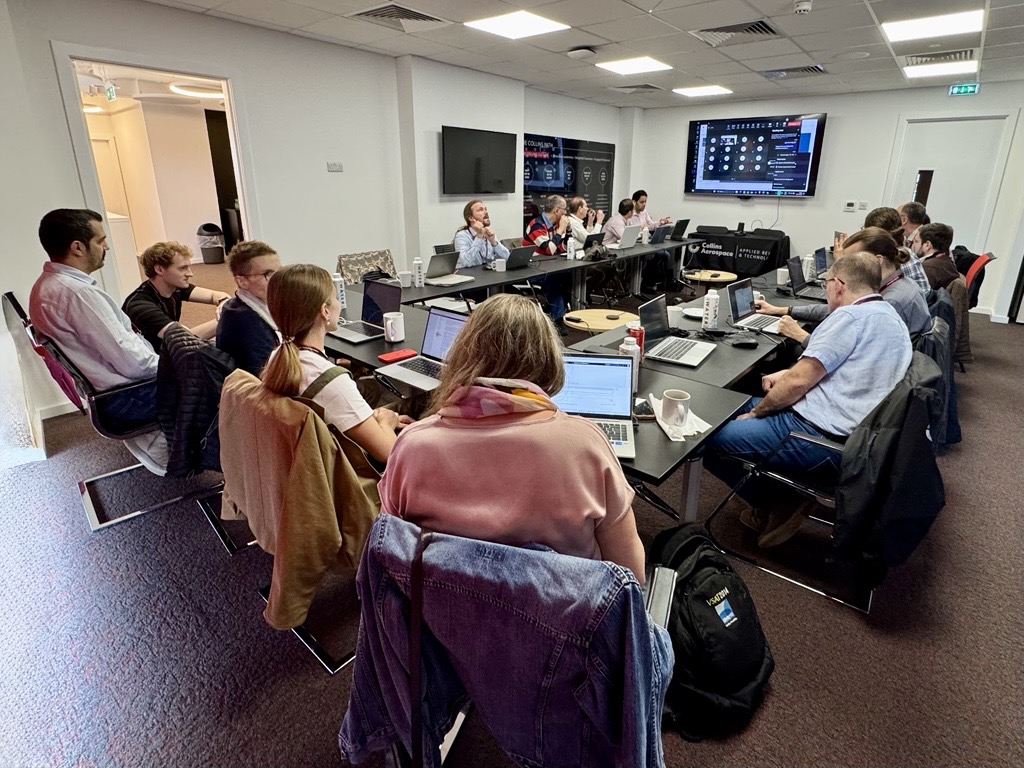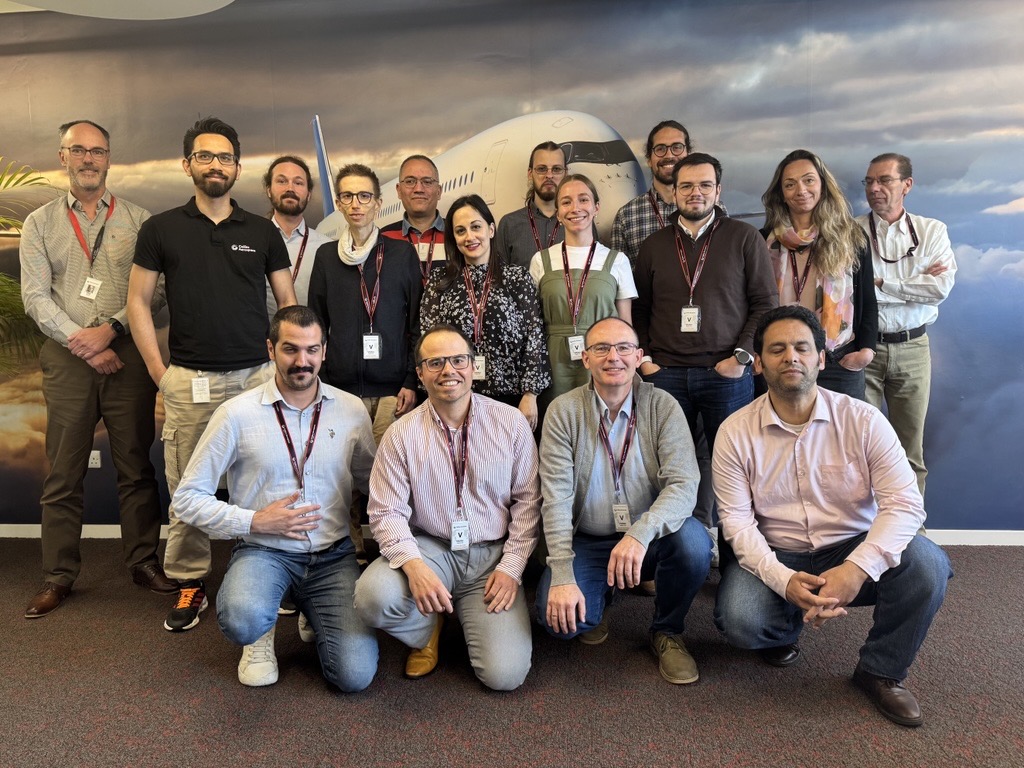
In a week that blended innovative advances with strategic coordination, the ETHER consortium gathered in Cork, Ireland, from June 10–12, 2025, for a dual-purpose event: a live demonstration of its integrated air-space connectivity network and the project’s General Assembly meeting. Hosted by Collins Aerospace, the gathering marked a decisive moment for ETHER as it enters its final operational phase.
From London to Dublin: Across the Skies—And Network Layers
The week opened with a technical demonstration of Air-Space Safety Critical Operations at Collins Aerospace on 10 June. The scenario? A simulated gate-to-gate aircraft journey from London to Dublin—traversing terrestrial, aerial, and satellite communication layers—to test how ETHER’s hybrid network ensures uninterrupted, ultra-reliable connectivity under real-world conditions.
At the heart of the showcase was a fully integrated 3D aeronautical data network powered by Software Defined Networking (SDN), AI-driven forecasting, and intelligent orchestration. This dynamic network was engineered to meet the demanding Required Communication Performance (RCP) standards essential for aviation safety, resilience, and service quality.
Key technical highlights included:
- 99.99999% reliability and service continuity, a benchmark for critical communication systems
- Global coverage through terrestrial, High-Altitude Platform Systems (HAPS), and satellite layers
- Packet error rates as low as 10⁻⁶, ensuring integrity for safety-critical messages
- Over 80% improvement in energy efficiency, enabled by predictive, adaptive resource allocation
A System of Systems: Who Made It Possible?
Bringing the demonstration to life was the result of seamless collaboration among several ETHER partners, each contributing a critical piece of the system’s intelligence and performance. Collins Aerospace played a central role by hosting the event and setting up the testbed, integrating software-defined radios (SDRs) to emulate communications across terrestrial, high-altitude platform (HAP), and satellite links—enabling real-time evaluation of aircraft connectivity in a multi-layered environment.
Supporting the system’s intelligence layer, Net AI delivered AI-based forecasting tools capable of predicting network link performance and edge resource demand in real time. These predictive capabilities allowed the network to adapt dynamically to changing conditions, ensuring proactive and efficient resource allocation. Complementing this, Aristotle University of Thessaloniki (AUTH) provided the orchestration decision engine—responsible for determining how and when resources should be allocated to meet service demands while optimizing energy efficiency and maintaining Quality of Service.
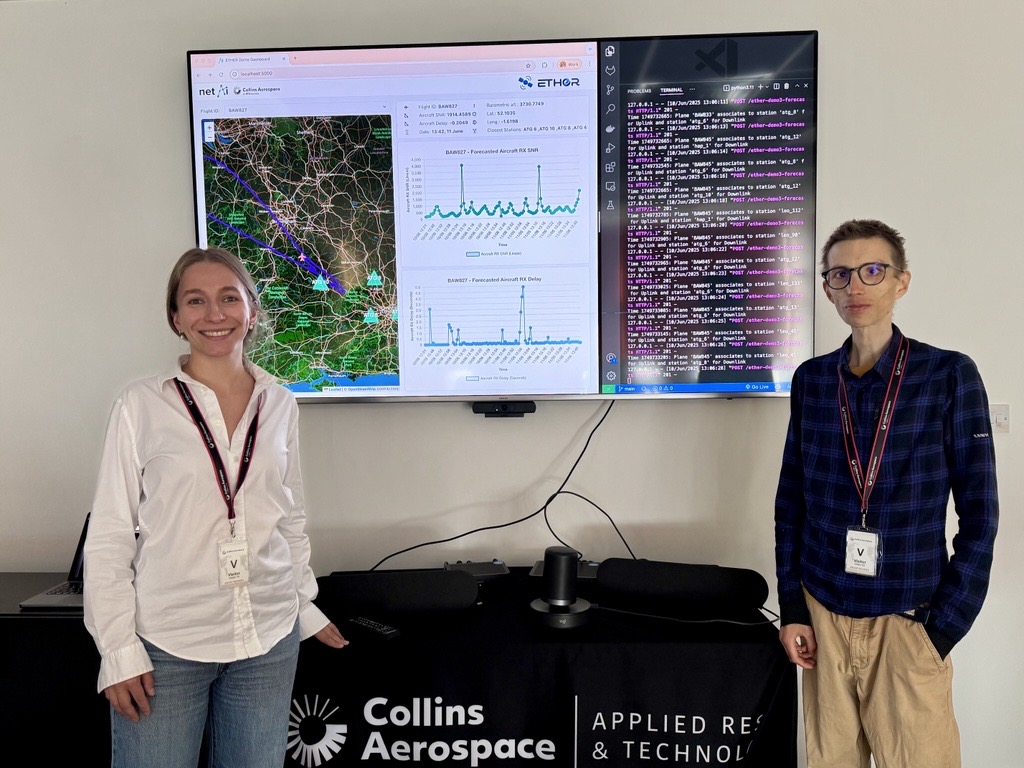
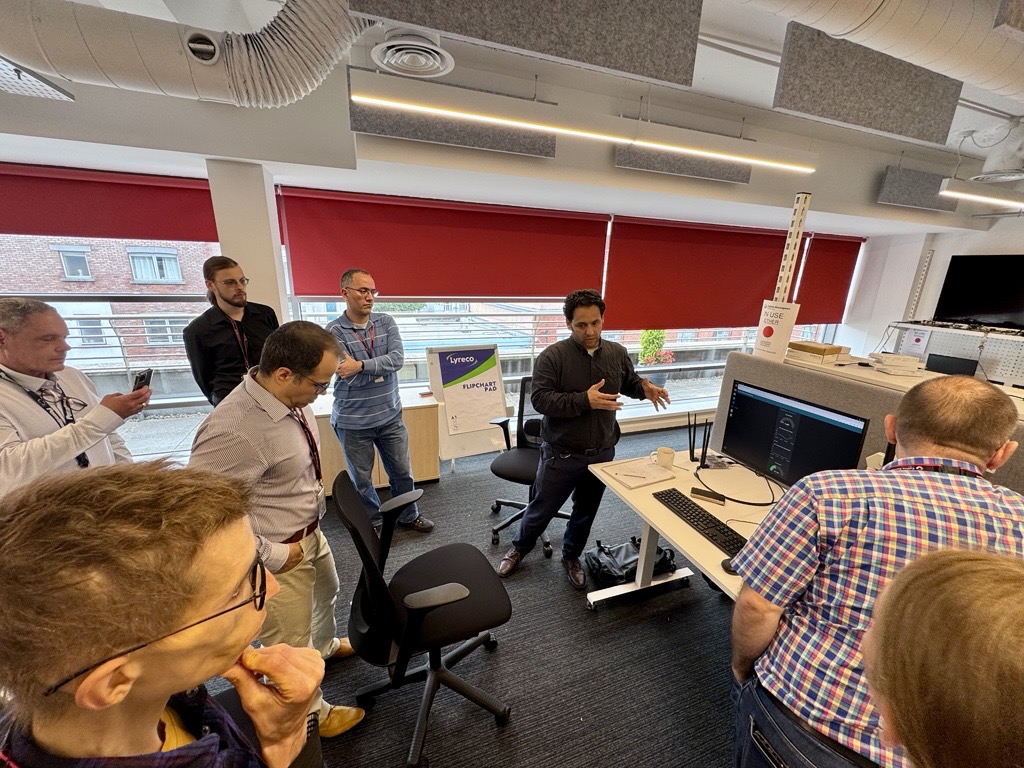
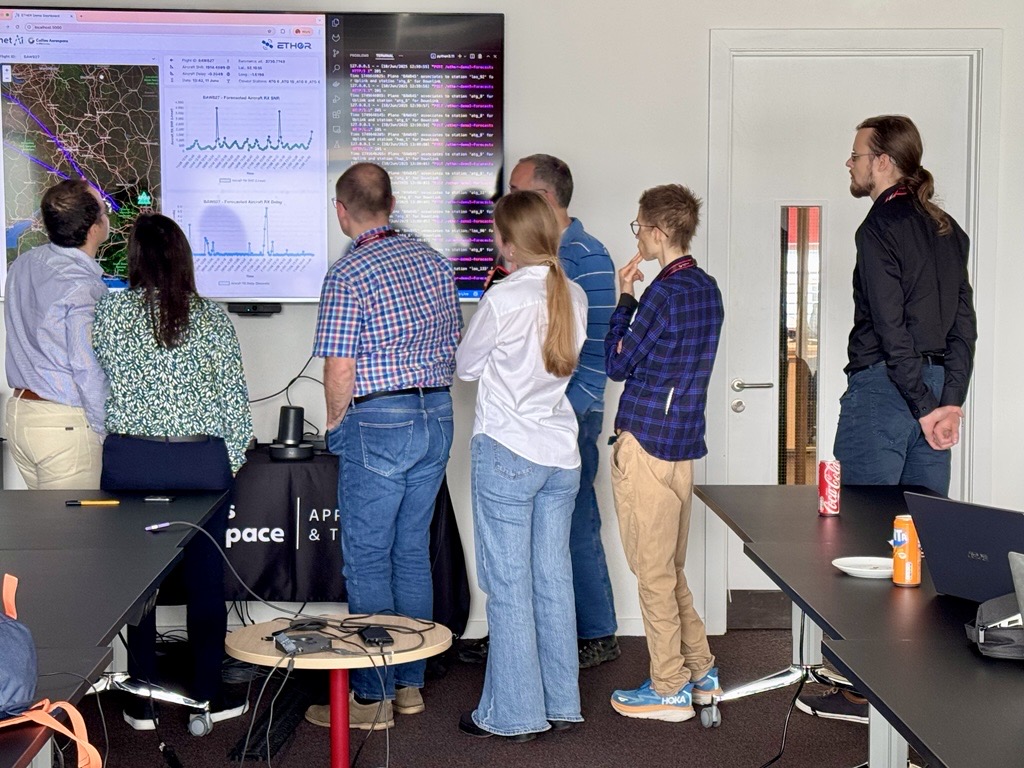
Meanwhile, Nearby Computing ensured that these orchestration decisions could be executed at the edge of the network. Their edge orchestrator managed cloud-native compute resources dynamically, deploying them where and when they were needed based on the forecasts from Net AI and the logic provided by AUTH. The result was a tightly integrated system where aircraft could request services—whether real-time communication or media streaming—and receive guaranteed performance, even as they transitioned between terrestrial, aerial, and satellite networks.
General Assembly Charts the Final Steps
Following the demo, the consortium officially opened its General Assembly on 11–12 June, bringing together representatives from all partner organisations to coordinate the final stretch of the project.
With only a few months left until ETHER concludes, discussions focused on:
- Final integration and validation of the hybrid multi-layer network
- Analysis of recent performance results and demo data
- Pathways for exploitation and standardisation, ensuring ETHER’s innovations contribute to real-world deployment, policy, and industry uptake beyond 2025
